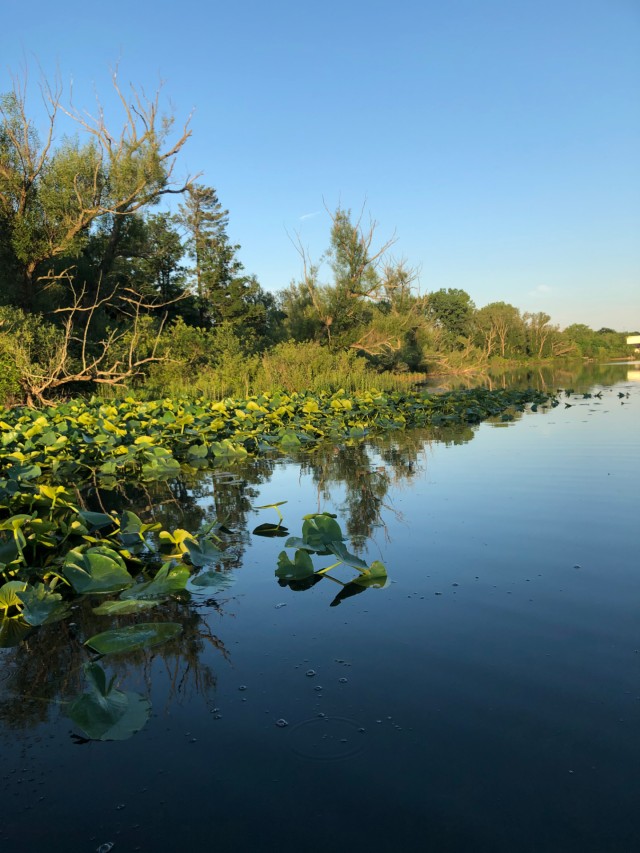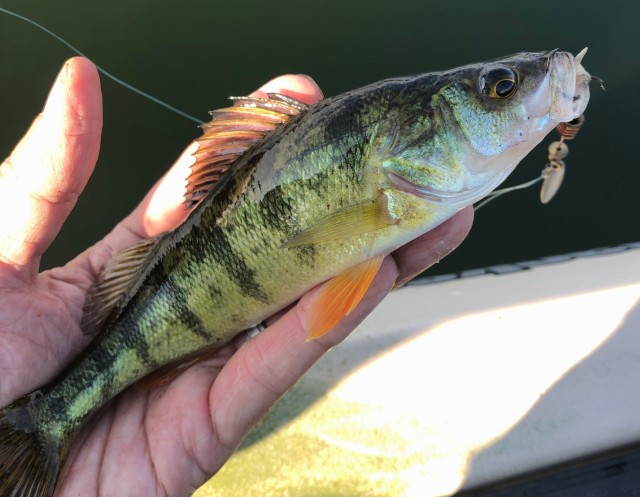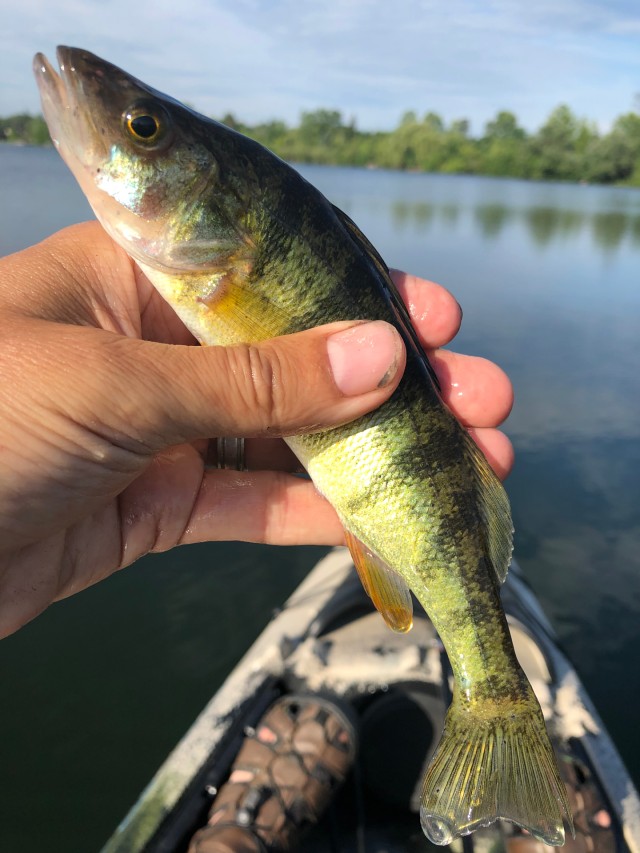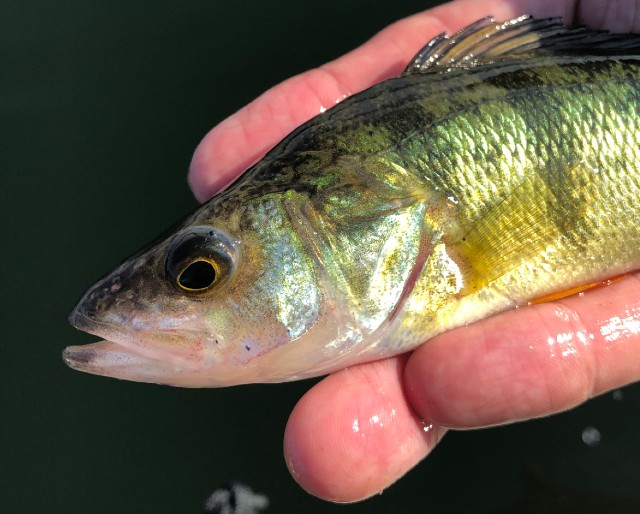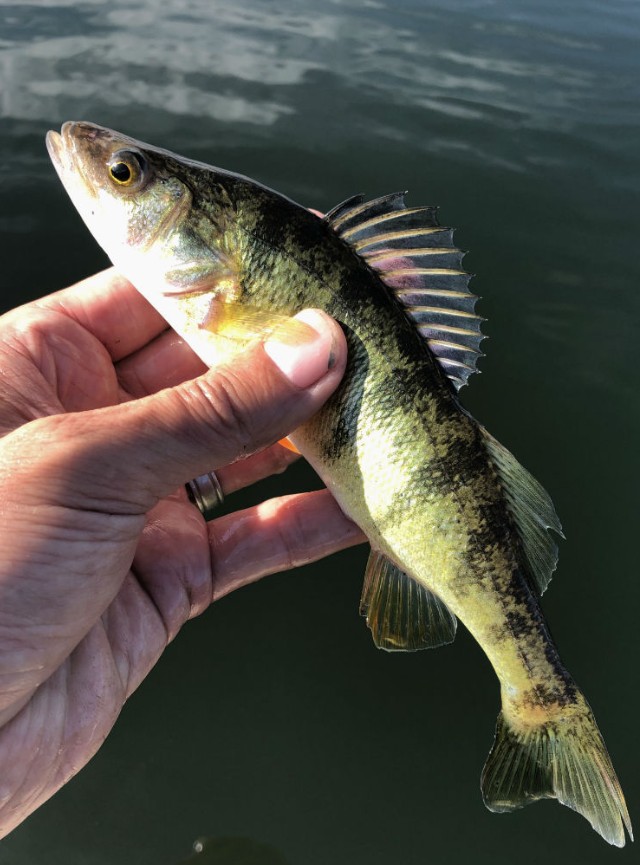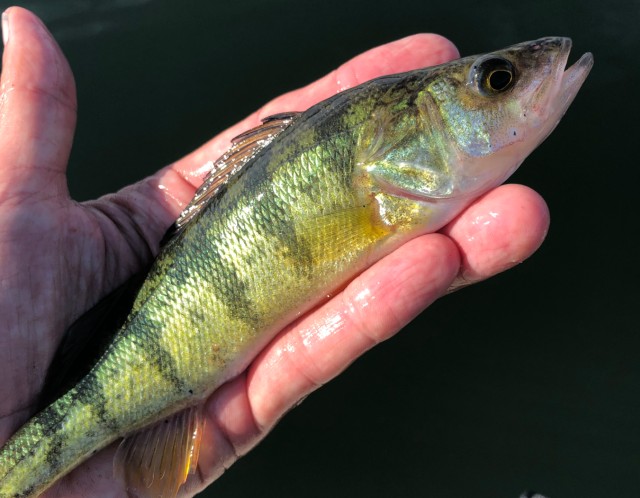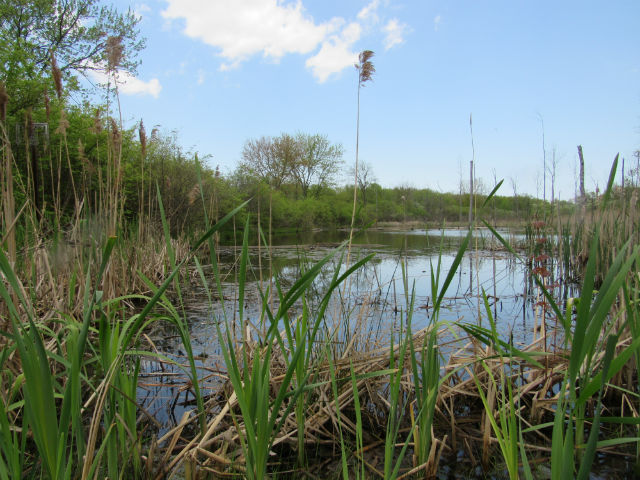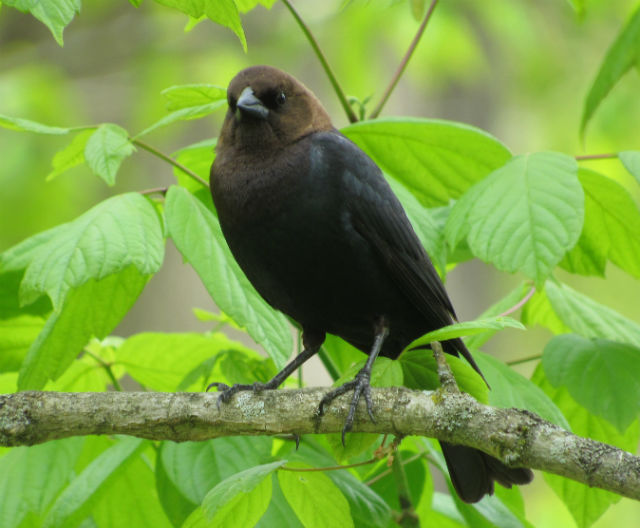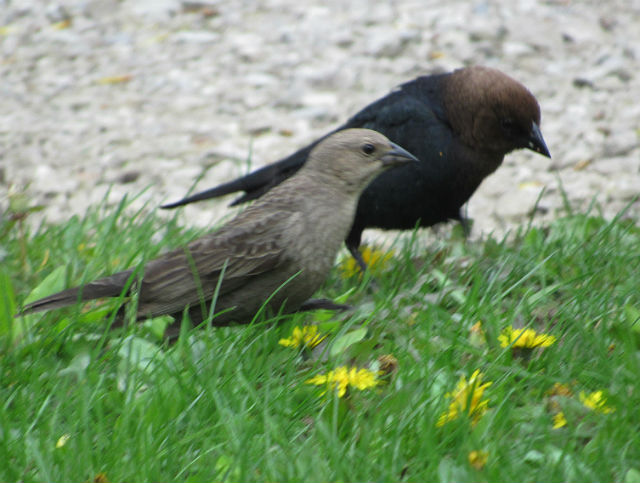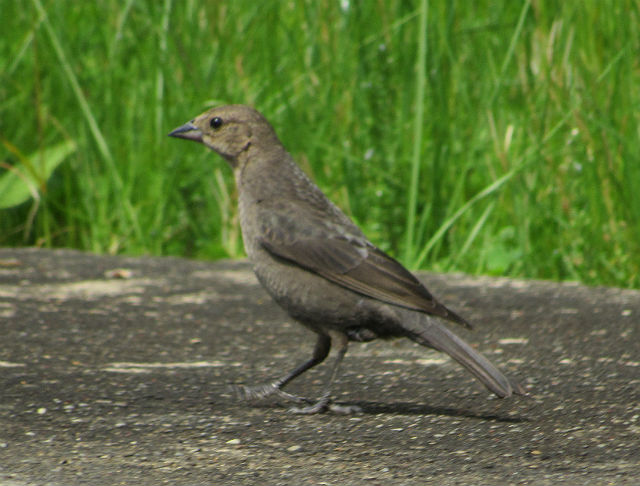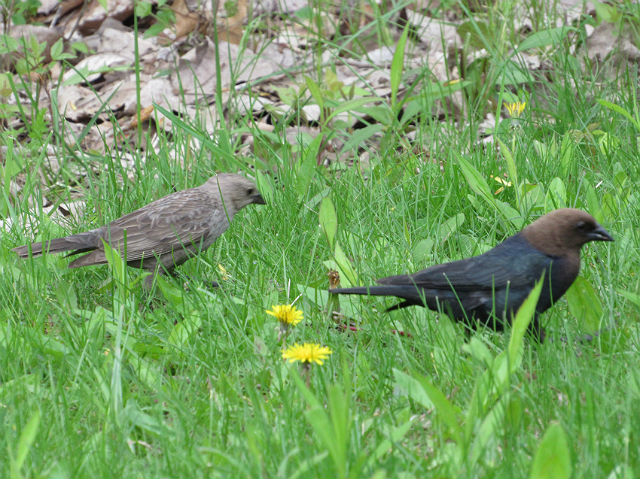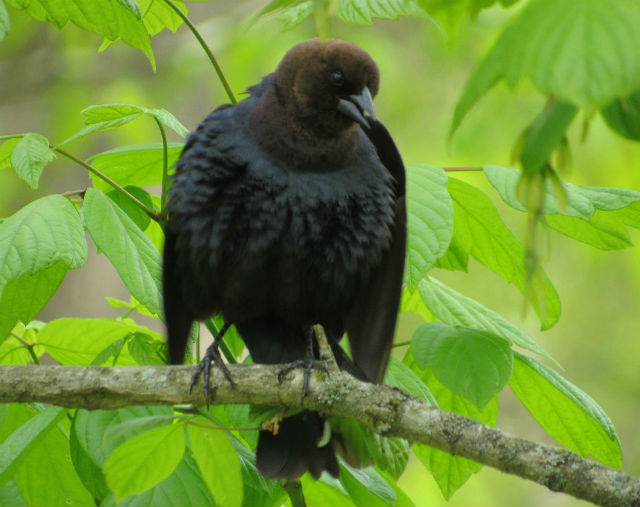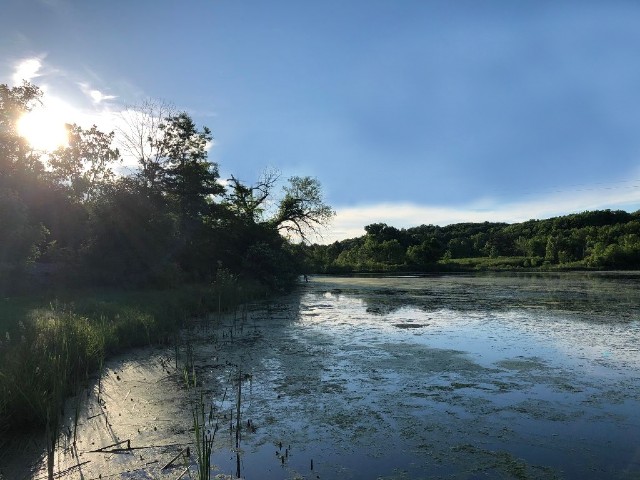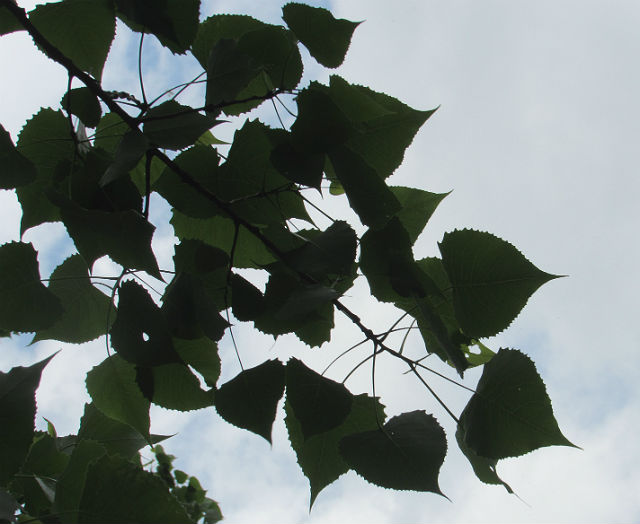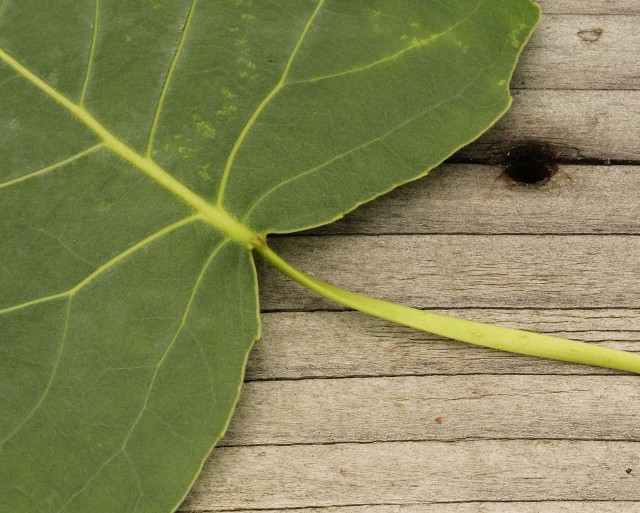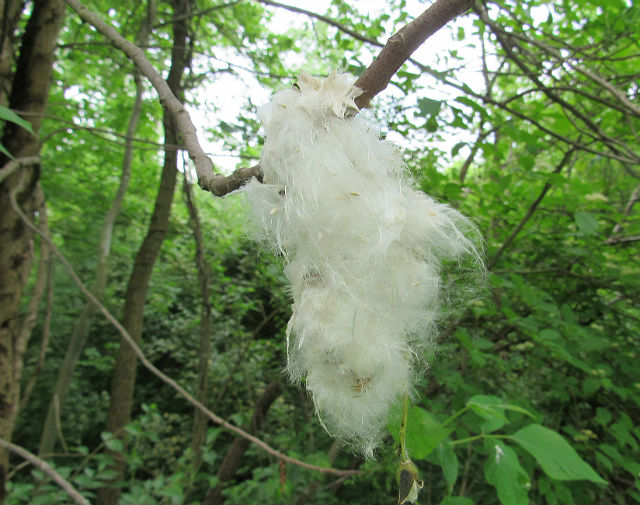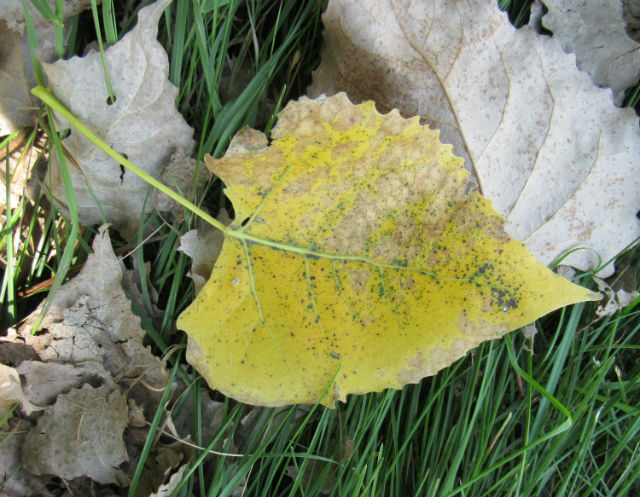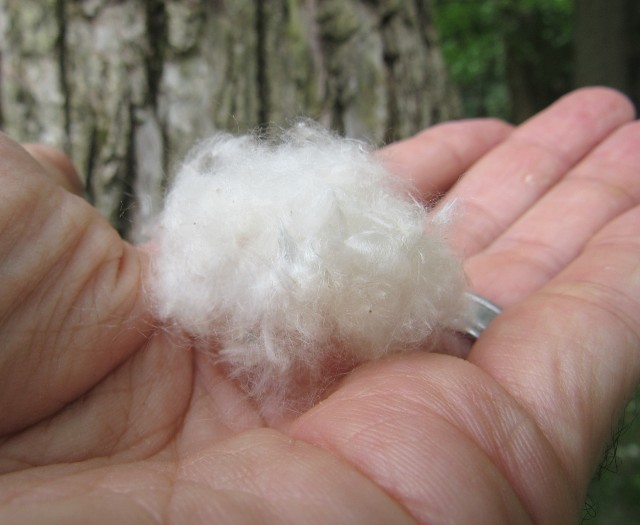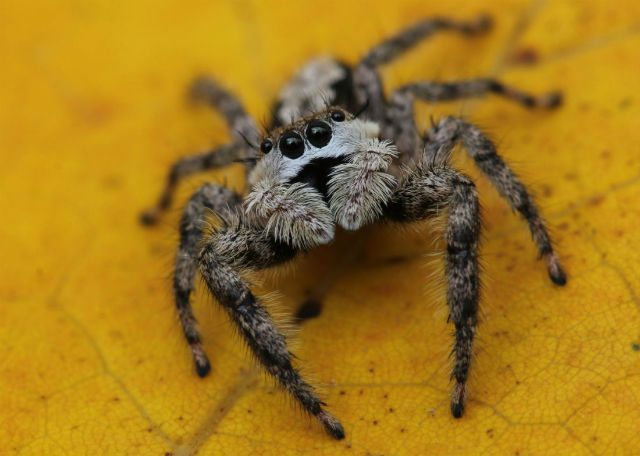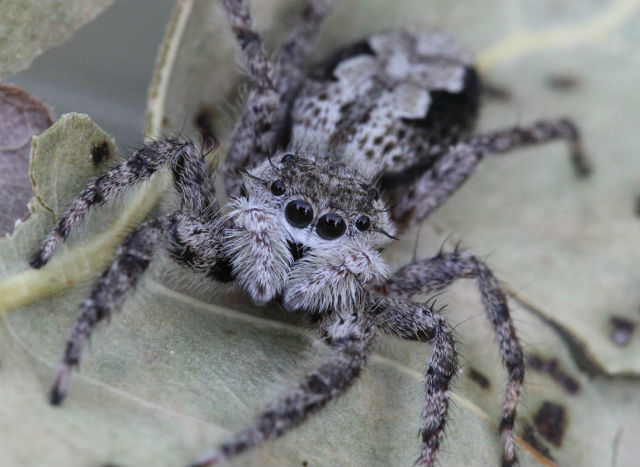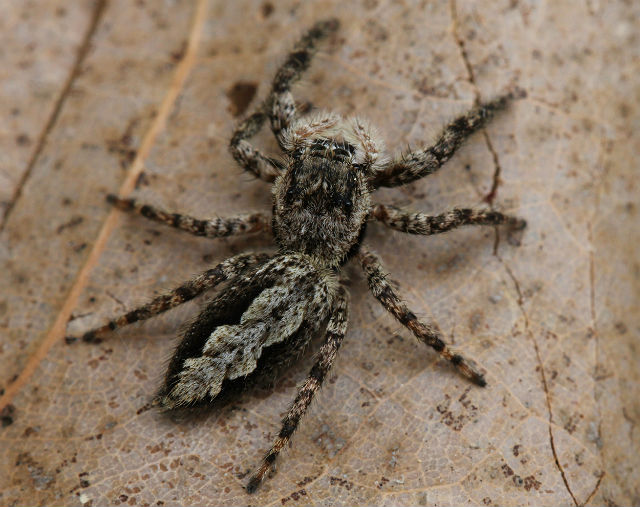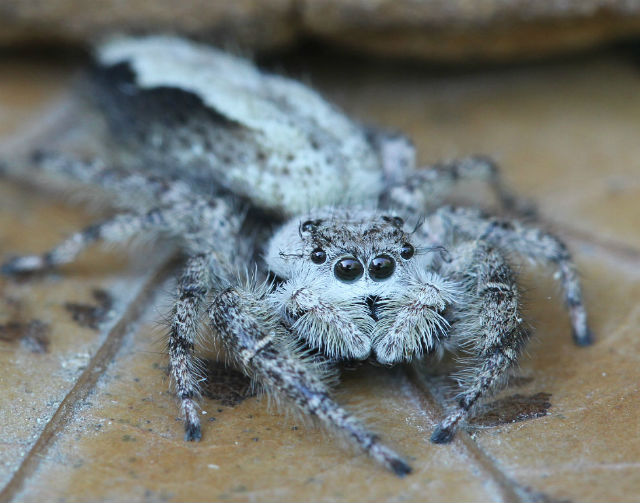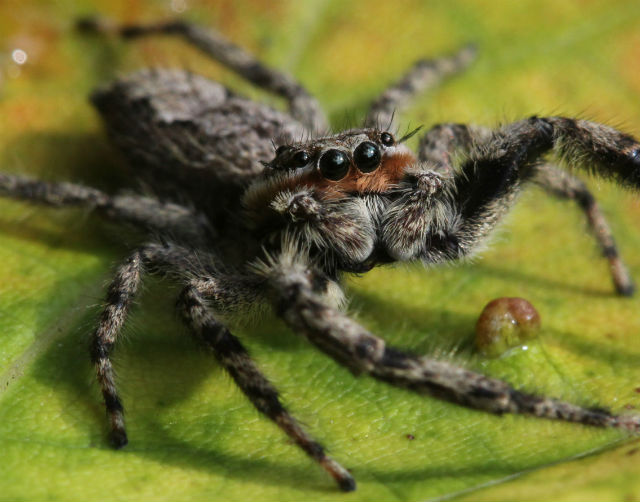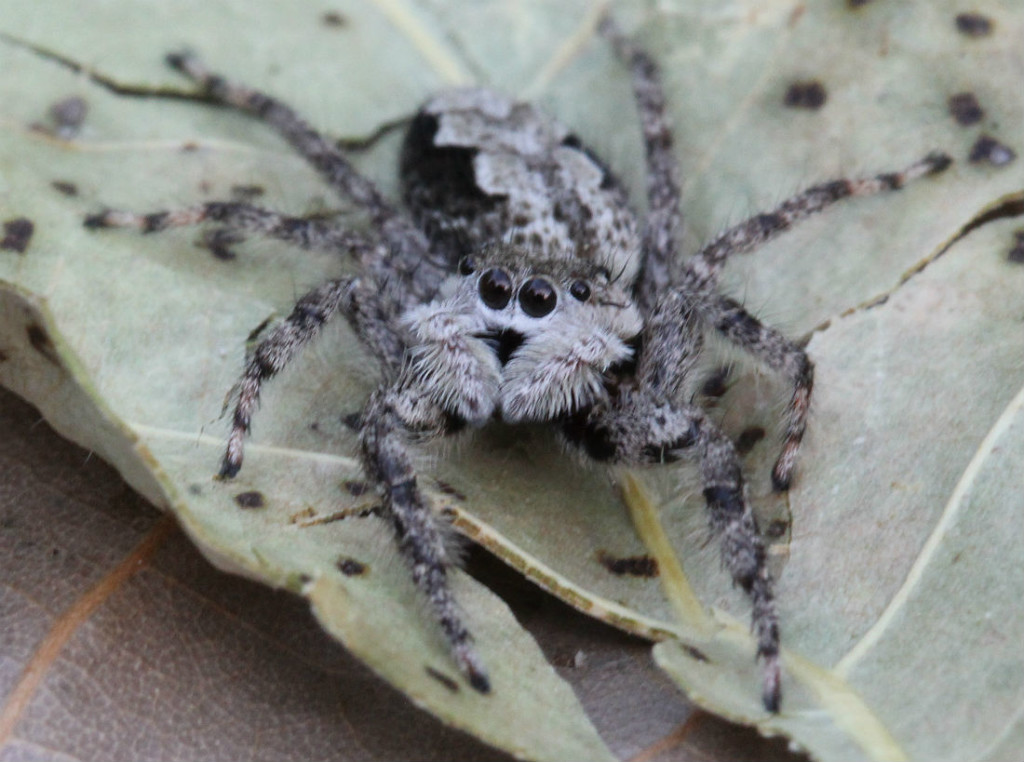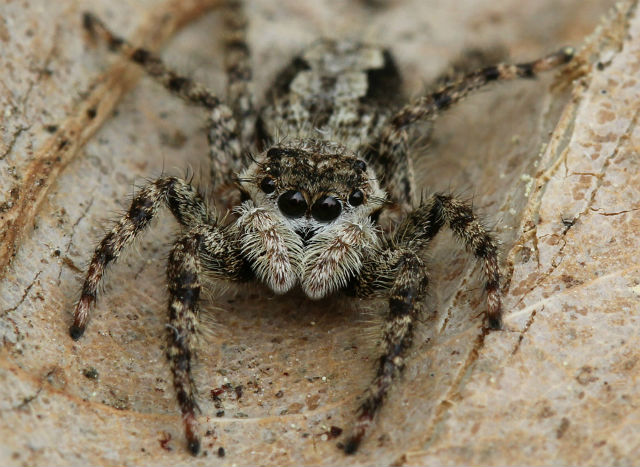Recently I caught one of these fine fish in Geauga Lake in northeast Ohio. It has a yellow and brass-colored body and distinct pattern, consisting of five to nine olive-green, vertical bars, triangular in shape, on each side.
Yellow Perch are only found in North America and reside in ponds, lakes, the pools of creeks and slow flowing rivers. They are most often encountered in clear water near vegetation and tend to school near the shore during the Spring. They can also be found in brackish water.
Adults are typically 6 to 10 inches long and dine primarily on immature insects, larger invertebrates (like crayfish) and the eggs and young of other fish, which they take both from open water and from the bottom.
The young of this species often mixes with other small fish in schools. Adults often occur in schools of 50 to 200 or more fish, staying closer together in the Summer than in the Winter.
The Yellow Perch has two dorsal fines, the first of which has prominent spines. This fish reaches maturity at an age of one to two years; its average life span is seven to eight years.
This fish is also known as Lake Perch, Ringed Perch, American Perch, American Perch, Raccoon Perch and Ring-tailed Perch.

